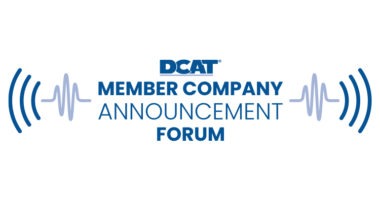Biosimilars: Challenges and Opportunities in Market Uptake
Biosimilars represent a small part of the global pharmaceutical market with Europe leading in biosimilar approvals comparative to the US. What are the challenges and opportunities for biosimilar uptake and what have been developments thus far in 2019?
Biosimilar challenges and opportunities in Europe
A recent report by KPMG, commissioned by Medicines for Europe, which represents generics and biosimilars developers in Europe, examined ways to increase the utilization of biosimilar, generic, and other value-added medicines in hospitals, which among European countries, account for the greatest share of healthcare expenditures, with medicines representing a part of those expenditure. The report analyzed the hospital systems and medicine usage in eight European countries (Belgium, France, Germany, Italy, Poland, Portugal, Spain, and the UK).
To evaluate the opportunities in generic and biosimilar uptake in hospital systems in those countries, the report looked a several key factors: (1) the national pricing and reimbursement system for medicines in a given country; (2) the procurement landscape of medicines in the hospital setting, with specific attention for generic and biosimilar medicines; and (3) the main enablers for generic and biosimilar medicine access in the hospital setting as well as barriers.
The report analyzed the differences between countries in the utilization of generic and biosimilar medicines in hospitals in those eight European countries. Comparing value and volume market shares, originators and off-patent brands typically have a combined volume market share of < 30%, whereas the budgetary impact of originators and off-patent brands typically exceeds 60%. According to the report, France and Germany have hospital environments that enable the highest utilization of generic medicines compared to the other countries in the scope of this study. On the other side of the spectrum, Belgium shows the most potential to further optimize the hospital environment in order to stimulate higher uptake of generic medicines. Compared to countries, such as Lithuania and Austria, however, all countries in the scope of the study show potential for further improving value and volume market shares of generic medicines in the hospital setting.
Increasing biosimilar uptake
The report identifies four biosimilar-specific key ingredients for increased utilization in the hospital setting. These four biosimilar-specific key ingredients focus on improving market access of biosimilar medicines by increasing awareness of hospital physicians, nurses and pharmacists, implementing biosimilar target agreements and quotas and by drafting guidelines on treatment switching. Specific recommendations to increase access of biosimilar medicines in the hospital market and to stimulate competition are outlined below.
1. Create guidelines and/or information campaigns to increase awareness of patients and healthcare professionals (including hospital physicians, nurses and pharmacists) regarding the efficacy, quality and safety of biosimilar medicines as well as other important topics such as biosimilar medicines introduction in the clinical practice and physician-led switching. The report explains that a general lack of awareness/education on biosimilar medicines still contributes to some resistance among healthcare professionals including hospital physicians, nurses and pharmacists. In order to improve the clinical use of biosimilar medicines by healthcare professionals, and therefore to increase patient access to biologic medicines, the report concludes that it is important for hospitals and other trusted stakeholders to create information campaigns and educational settings to disseminate information on the benefits of biosimilar medicines and relevant biosimilar-related topics such as physician-led switching. In addition, the report says it might be useful to disseminate information about the importance of biosimilar medicines in cost-efficient quality care improvement in the hospital setting not only to healthcare professionals but also to controllers and managers which issue the tenders and often have an incentive to limit pharmaceutical spending (e.g. hospitals, regional health agencies or central procurement agencies).
For instance in the UK, the report pointed out that the update of NICE guidelines after the biosimilar filgrastim launch in 2008 reflected the improved cost-effectiveness of biosimilar filgrastim vs. alternative treatments. As a result, G-CSF prescribing restrictions were relaxed and usage also recommended for primary prophylaxis of neutropenia versus secondary prophylaxis only. Consequently, this guideline update stimulated an increased use of biosimilar filgrastim and enabled a greater number of patients to access these treatments at an earlier stage of the therapeutic cycle.
2. Create incentives for biosimilar use that take into consideration the long-term sustainability of the sector such as the implementation of target agreements and quotas for biosimilar medicine use. The report points out that setting concrete milestones for the use of biosimilar medicines with target agreements for physicians and quotas for hospitals, stimulates competition, increases patient access to biologics and supplies physicians with more treatment options. The report points out that targets must be accompanied by robust tracking to ensure accurate awareness of progress toward milestones. Regarding target agreements for physicians, the report provides an example in Germany in the region of Westfalen-Lippe where these target agreements are applied and the physician association plays a major supporting role to physicians by organizing information campaigns and by providing reporting to physicians about the progress of the management of the switch.
3. Draft national and or local hospital guidelines with respect to treatment changes and medicines exchange. The report points out that by drafting national/hospital guidelines on treatment switching, hospital stakeholders are informed on the safe and positive experience of physician-led switching and on the process of exchanging therapeutic alternative medicines (switching from a group of patients already undergoing treatment with an originator biological medicine to a biosimilar). The report points out that the safety of switching to biosimilar medicines can be incorporated in hospital guidelines and communication to physicians and patients.
4. Implement benefit sharing methods. The report points out that benefit-sharing models and schemes should be encouraged, so that cost-effectiveness gains resulting from the increased use of biosimilar medicines are re-invested into healthcare for the benefit of patients and all the relevant hospital stakeholders. The report provides an example from the University Hospital Southampton NHS Foundation Trust in the UK, where a managed physician-led switching program of biosimilar infliximab for all inflammatory bowel disease patients is available. The report points out that switching to biosimilar medicines allowed more patients to be treated and created the opportunity for re-investment in improvements of patients’ care, e.g. hiring more nurses to provide targeted support/better care to the patients.
Biosimilar approvals in 2019
Looking at the US, overall, the US Food and Drug Administration has approved 24 biosimilar products (which includes multiple biosimilar approvals for the same reference products), which includes eight approvals thus far in 2019. The 2019 biosimilar approvals by the FDA (as of November 5, 2019) are: Hadlima (adalimumab-bwwd) by Samsung Bioepsis., a biosimilar of AbbVie’s Humira (adalimumab); Eticovo (etanercept-ykro) by Samsung Bioepsis a biosimilar to Amgen’s/Pfizer’s Enbrel (etanercept); Kanjinti (trastuzumab-anns) by Amgen and Allergan, a biosimilar to Roche’s Herceptin (trastuzumab); Ontruzant (trastuzumab-dttb) by Samsung Bioepis, also a biosimilar to Roche’s Herceptin (trastuzumab); Trazimera (trastuzumab-qyyp) by Pfizer, also a biosimilar to Herceptin (trastuzumab); Ruxience (rituximab-pvvr) by Pfizer, a biosimilar to Roche’s Rituxan (rituximab); Ziextenxo (pegfilgrastim-bmez) by Novartis’ Sandoz, a biosimilar to Amgen’s Neluasta (pegfilgrastim); and Zirabev (bevacizumab-bvzr) by Pfizer, a biosimilar to Roche’s Avastin (bevacizumab).





